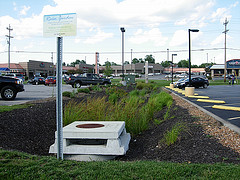

Photo by Aaron Volkening is licensed under CC BY 2.0
A new executive category has become somewhat common in government – a Director of Innovation. Individuals hired to these positions are charged with finding new and innovative ways to fund projects, provide services or create large-scale efficiencies.
Some have made great strides and taxpayers are beneficiaries. Because of this, there may be much more thought given to innovation and collaboration in the future.
But, collaboration and innovation are surfacing throughout the country already.
Here’s an example of a recent public project that accomplished numerous objectives – constructing new stormwater infrastructure, meeting an Environmental Protection Agency (EPA) mandate, creating many new jobs, providing economic stimulus and reducing costs for taxpayers.
Prince George’s County in Maryland launched a public-private partnership (P3/PPP) that involved the county and an environmental and infrastructure contractor. It began as a project to manage stormwater. But, then the county realized it could wrap its need to address the EPA’s Clean Water Act requirements into the project and accomplish more than one objective. Following this same line of thinking, the county also added other objectives to the project. Here’s how it will work.
Through the P3, dubbed the Clean Water Partnership (CWP), the county will ultimately retrofit public and private land with “green” infrastructure to collect and clean water runoff before any pollutant chemicals flow into the Chesapeake Bay. The county will begin by investing $100 million into the initial pilot phase of the CWP for retrofitting . The county will retrofit, using its traditional processes, 2,000 acres. At the same time, the private-sector contractor will compete with the county and retrofit a different 2,000 acres. If the results of the pilot show efficiencies and meet all other performance measures, the private contractor will be eligible to cover an additional 2,000 acres.
But there is more. The public-private partnership project includes terms to boost the local economy. Under terms of the engagement, the private contractor will receive up to a 10 percent bonus if other objectives are met. These include successful completion of economic development terms, which include hiring minority businesses and local workers. If the CWP is ultimately successful, it will reduce pollution, boost the local economy, create jobs and save money.
This type of P3 could ultimately become a model. The goal of accomplishing multiple objectives, while putting people to work and positively affecting the local economy, is a worthy one. Collaboration and innovation in government will serve taxpayers well.
For updates on the latest government trends from Mary Scott Nabers, follow our SPI Insights.
